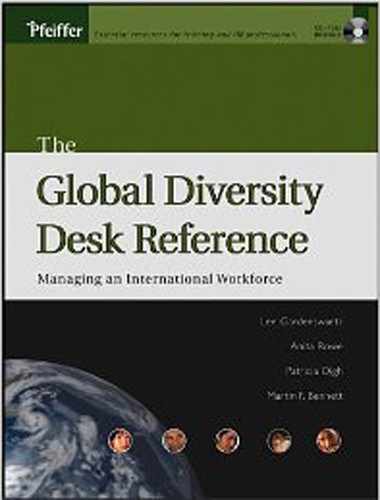1.3. GLOBAL DIVERSITY AS THE NEXT STEP
Although more than 75 percent of major American companies now focus on diversity as a strategic advantage and business leverage in the United States, there is minimal carryover internationally, even while business becomes more global in scope. These companies find themselves in the perplexing position of attempting to "roll out" overseas those diversity initiatives that were designed for a domestic workforce—in many cases without knowing why or, more importantly, how. What are the issues and questions that emerge when organizational and national cultures come into contact and when the need to capitalize on global diversity poses significant dilemmas? Four key issues arise:
What is the business case for global diversity and how is it different from the domestic business case for diversity?
How do value statements underlying domestic diversity efforts need to be altered to have meaning and relevance outside our home country?
How well are we applying our learning in the domestic diversity arena to our efforts globally—or are we reinventing the wheel?
Are we actively learning from other cultures or are we simply attempting to make them "more like us"?
Companies do not need to do business outside their home country to face global diversity issues. In the United States, for example, immigration is at its highest point in fifty years—and the face of that immigration has changed dramatically—bringing global diversity to our own backyards and providing significant challenges and opportunities to U.S.-based businesses as well.
There are two big shifts away from the past. Previously only a very small portion of people in the enterprise needed international expertise. Now, according to Nancy Adler, "Almost every manager needs at least some veneer of international, cross-cultural competencies because they're dealing with suppliers, clients, and colleagues from various countries and cultures around the world." Second, organizations used to focus on getting a small cadre of people to learn a lot about a particular place. Now, "You're on multinational task teams, on multinational projects ... companies need global representation, people from multiple cultures who can work in multicultural teams talking about strategy, and that strategy has to be global in content."[]
What, then, are the major issues surrounding globalization and what impact do they have on our ability to manage diversity—across borders?
